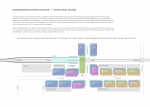With a rail viaduct over Congress Street, plus an eventual new mixed-use station complex with connections to six or more local transit routes and a direct connection to the Portland Trail System, a vibrant, pedestrian-oriented shopping, dining, office and residential district would increase land values and revenues for landowners and the City alike. This has been proved many times over.
The higher cost of this site work could be greatly offset by increased tax revenue if a Station District TIF were adopted for the underdeveloped land in the immediate area — sure, Congress Street east and west of the tracks, but also the underdeveloped blocks along St John Street, between Park Avenue and D Street.
The City Council has been talking specifically about socio-economic equity lately and this TIF would help pay for a dramatic improvement to Libbytown, which was unfairly ripped apart and subsumed by the interstate highway and its overbuilt access ramps. This could help provide socio-economic restitution to residents and landowners still there.
The higher cost of this site work could be greatly offset by increased tax revenue if a Station District TIF were adopted for the underdeveloped land in the immediate area — sure, Congress Street east and west of the tracks, but also the underdeveloped blocks along St John Street, between Park Avenue and D Street.
The City Council has been talking specifically about socio-economic equity lately and this TIF would help pay for a dramatic improvement to Libbytown, which was unfairly ripped apart and subsumed by the interstate highway and its overbuilt access ramps. This could help provide socio-economic restitution to residents and landowners still there.
Last edited:


